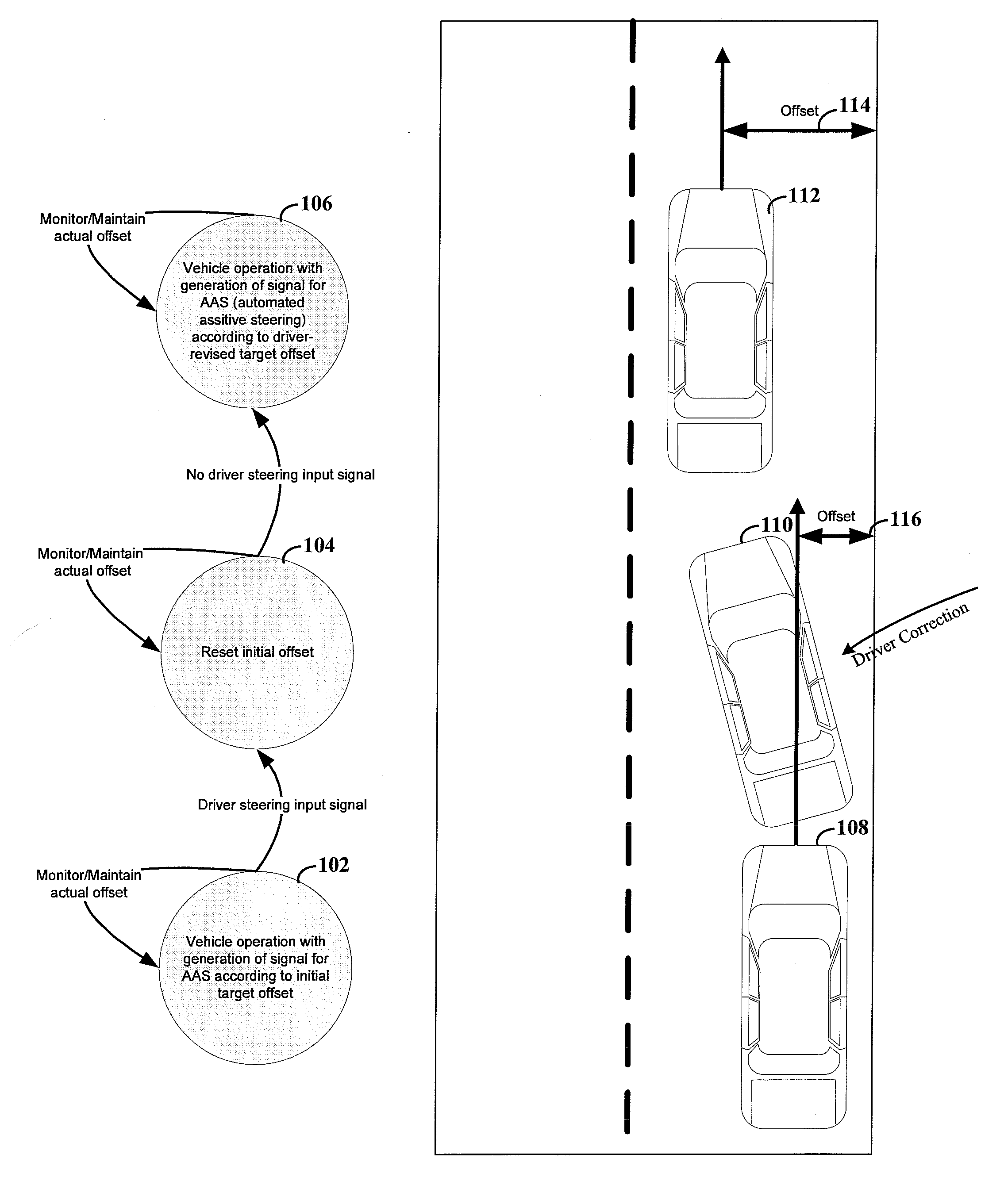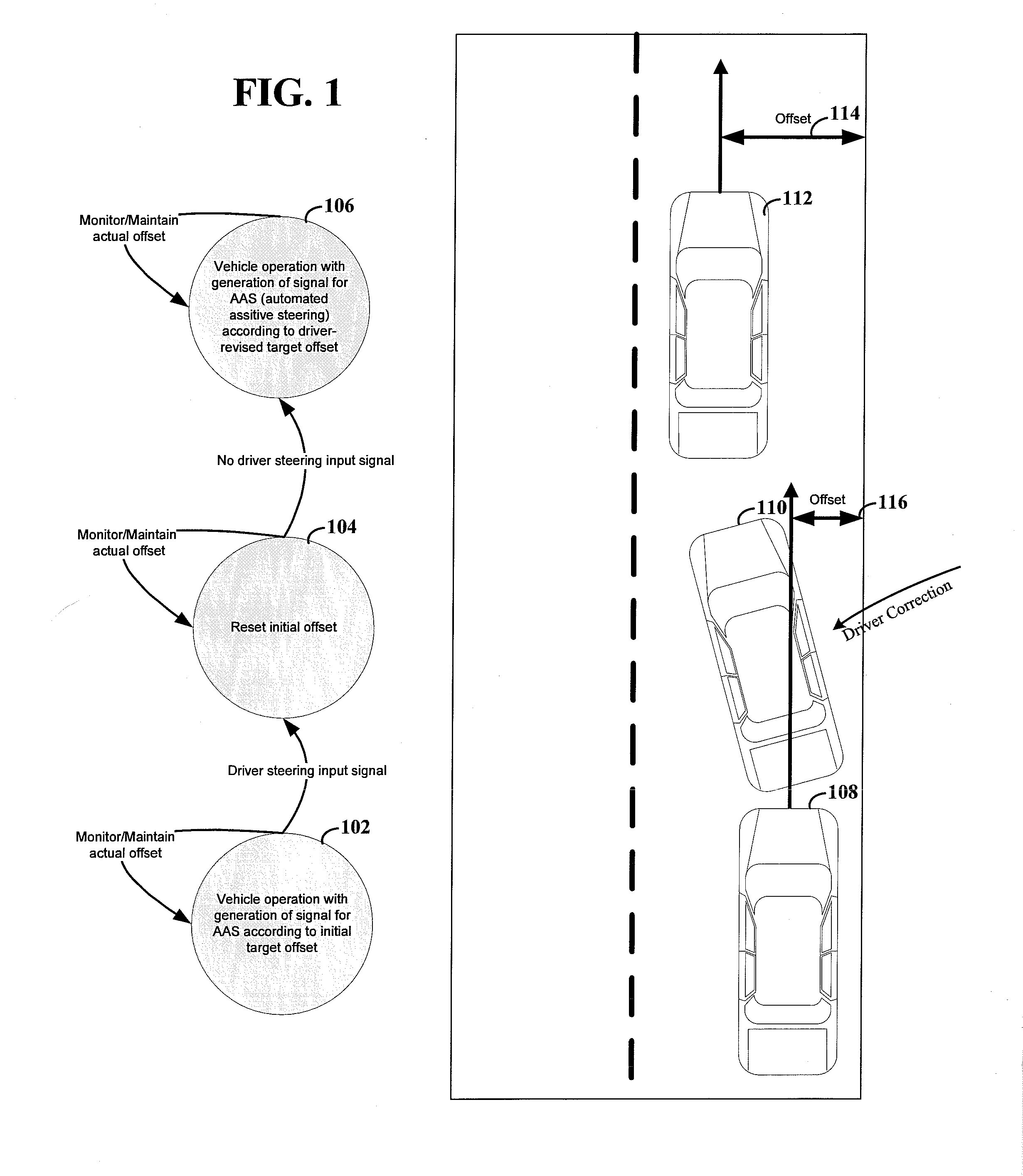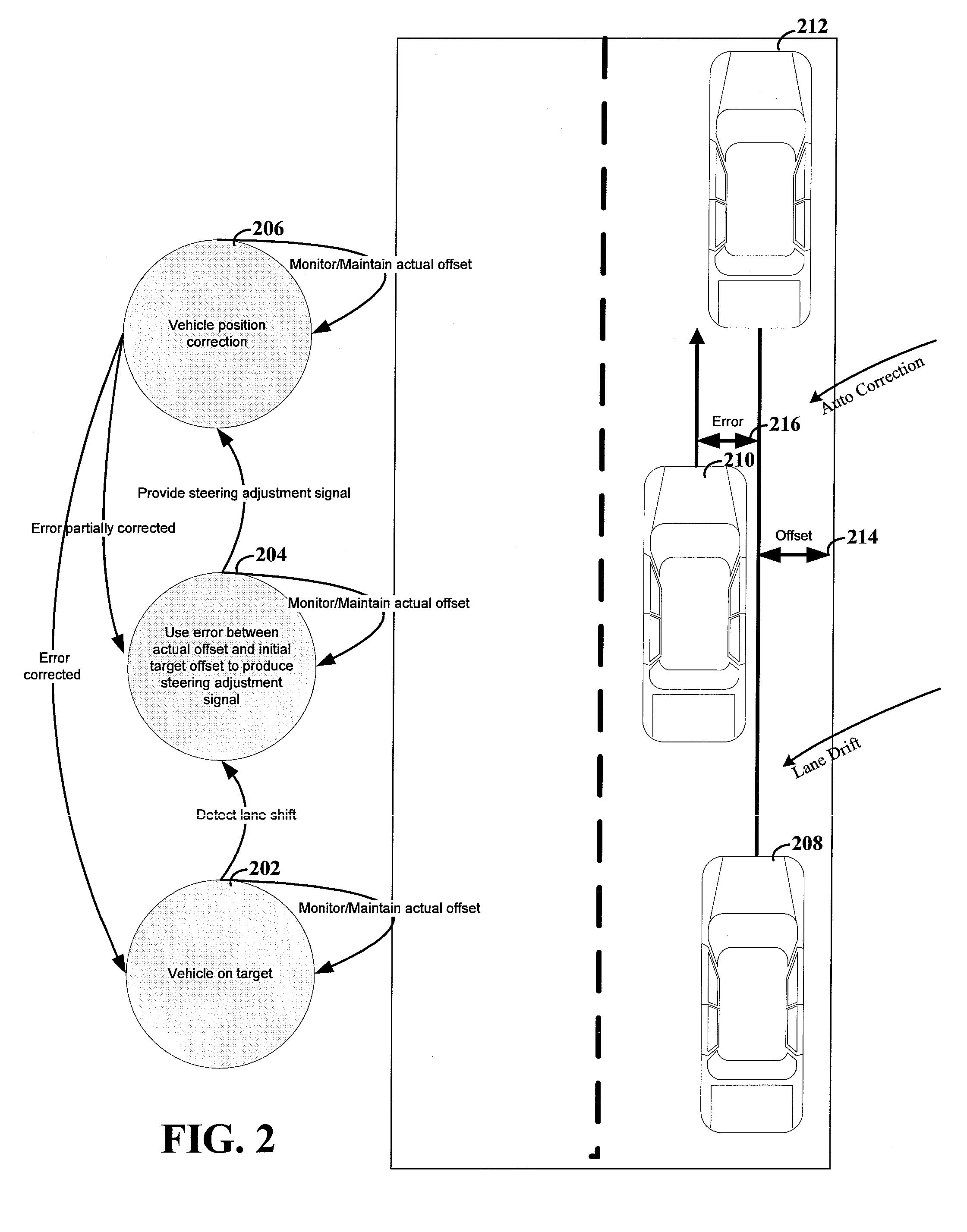Systems, methods and devices for adaptive steering control of automotive vehicles
a technology for steering control and vehicles, applied in the direction of steering initiation, vessel construction, instruments, etc., can solve the problems of unintended lane departure, difficult for the driver to correct the vehicle's position, and burden on the driver, and achieve the effect of steering from the driver, even
- Summary
- Abstract
- Description
- Claims
- Application Information
AI Technical Summary
Benefits of technology
Problems solved by technology
Method used
Image
Examples
Embodiment Construction
[0019]The present invention is believed to be useful for assisting a driver of a vehicle. A specific embodiment the present invention facilitates maintaining an offset within a lane as a function of driver steering input. While the present invention is not necessarily limited to such applications, various aspects of the invention may be appreciated through a discussion of various examples using this context.
[0020]Aspects of the present invention relate to a synergistic combination of automation and human control for a motor vehicle traveling on a lane, thereby allowing human-based decisions to supplement (or be supplemented by) automated decisions. Specific aspects facilitate maintenance of the vehicle on the lane.
[0021]A specific embodiment of the invention facilitates the ability of a driver to stay on a lane with minimal or no steering where, for example, the road is curved, if the crown of a road slowly pulls the vehicle off the road, or if the vehicle alignment is off. Thus, on...
PUM
 Login to View More
Login to View More Abstract
Description
Claims
Application Information
 Login to View More
Login to View More - R&D
- Intellectual Property
- Life Sciences
- Materials
- Tech Scout
- Unparalleled Data Quality
- Higher Quality Content
- 60% Fewer Hallucinations
Browse by: Latest US Patents, China's latest patents, Technical Efficacy Thesaurus, Application Domain, Technology Topic, Popular Technical Reports.
© 2025 PatSnap. All rights reserved.Legal|Privacy policy|Modern Slavery Act Transparency Statement|Sitemap|About US| Contact US: help@patsnap.com



